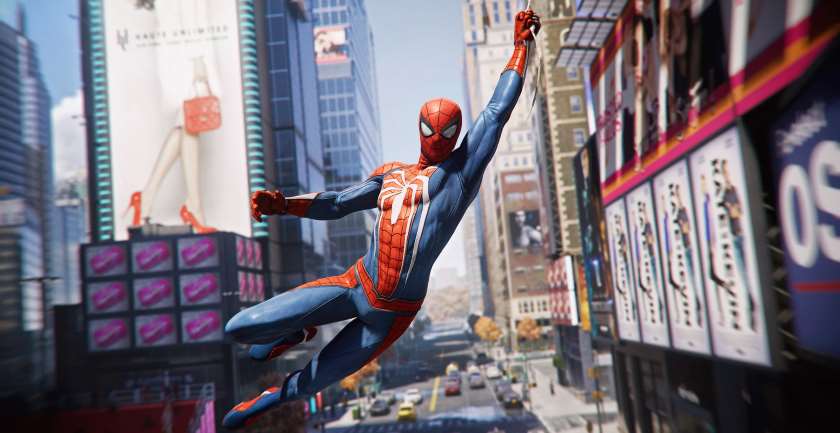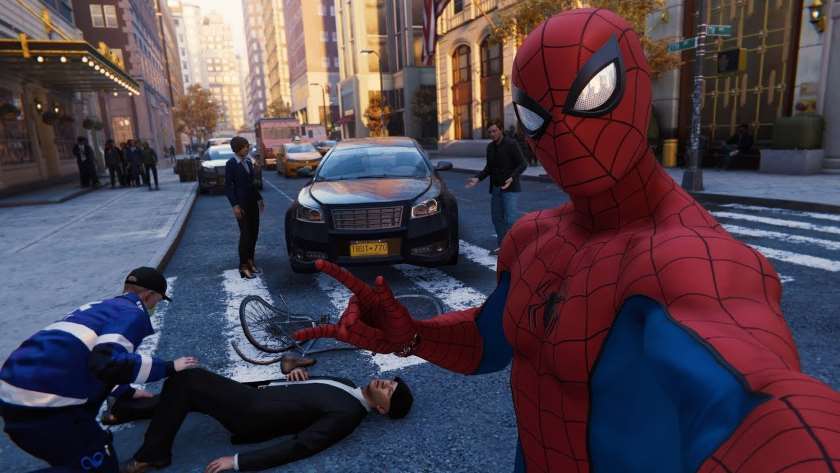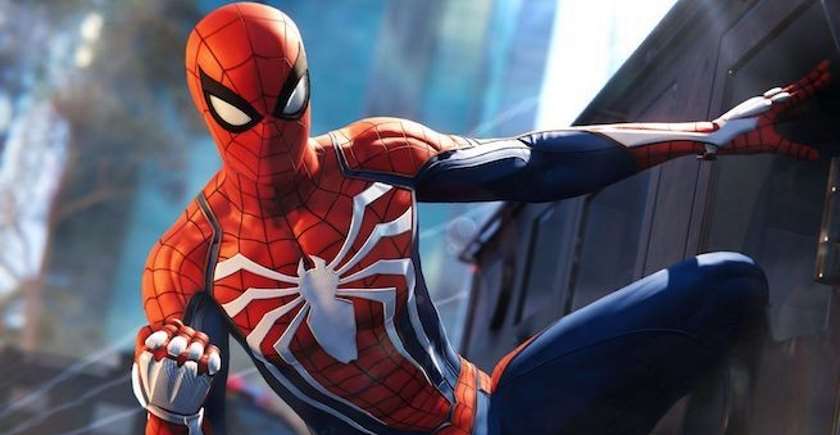Spider-Man and the Open-World Template

There’s a lot that Insomniac Games got right when interpreting Spider-Man into a digital, interactive medium. The rush of cars beneath as you swing like a pendulum above, lashing out another sticky tether to catapult towards danger. The acrobatic mid-air freedom as you net one thug to the wall before snatching a manhole cover from the ground, careening it off of a gunman’s head before pulling yourself into a fist-first greeting with that jerk and his rocket launcher.
“You really feel like Spider-Man!” is the common quote hailed by games writers whose creativity is depleted by time pressures and collection of other deadlines they need to hand in. Certainly, these moments are what any fan of the cowled arachno-boy could hope for. They also allow the game to stand apart on a raw mechanical level. From swinging between skyscrapers to pummeling punks, Marvel’s Spider-Man offers an experience like no other. At least, as long as we’re talking about maneuverability.
There’s a lot more to being Peter Parker – and a superhero at that – than your powers.
The early hours of Marvel’s Spider-Man showed a lot of promise in this regard. Pete has to juggle his duties as a crime fighter with the obligations of his day job, his relationship with Aunt May, and the wintry fallout of his broken romance with Mary Jane. The player has the chance to stare down a microscope and perform a puzzling abstract interpretation of science, implementing some of Pete’s intellectual talents rather than his supernatural brawn.
What perhaps excited me most was arriving at a crime scene only to discover there were no criminals to brawl. It was a car accident and all I had to do was rescue civilians from the wreckage.
“Finally,” I thought to myself, “a game that understands the dimensions to being a superhero.”
While I love the Arkham and inFamous games, they always felt compromised by the medium in which they took place. Arkham Asylum is still a perfectly fine Batman story, focused on a single location that does not require any other element of Bruce Wayne’s life. Arkham City, Arkham Origins and Arkham Knight, on the other hand, felt incredibly artificial by removing civilians from the city altogether. The player could be as reckless as possible, hand-waving the convicts run down by the Batmobile as having been “stunned” by some electrical field or barrier.
Despite inFamous being built around the concepts of being a hero or villain, never did the city itself seem to really respond adequately to your actions. The game still needed a linear progression, and the A.I. could only react in so many ways as you unleashed Hell or salvation upon the concrete streets. The stories were personal, but they failed to truly capture the pressures and obligations of being a superhuman that conflict with the trials of a personal life.

Of course, give players a photo mode in a superhero game and they’ll capture selfies in front of injured pedestrians
Marvel’s Spider-Man is the closest we’ve managed, and it has secured its place as my favorite game of its type as a result. Nothing captures the life of Peter Parker like needing to use his powers to track down a garbage truck in possession of all his belongings, forcibly evicted from his apartment for failing to pay rent. Empathizing with the mental cartwheels he goes through as a text of his is misinterpreted by Mary Jane, desperate to course correct and prevent further collisions with icebergs of wordplay.
These are the least of Marvel’s Spider-Man, however. Which is not to say I expect more time to be spent in Peter Parker’s day-to-day than an exciting adventure. Those sorts of slice-of-life breaks from danger are only ever an occasional issue or two even in the comics. I expect the majority of a story to somehow involve his current conundrum with the super-villain of the week/season/volume/etc.
What I found so disappointed was the speed at which those car collision missions were gradually appended with chases with criminals. Chases that would conclude with yet another street fight with thugs.
The collisions were a breath of fresh air at first because they had nothing to do with whatever enemy faction was occupying that sector of the map. There was no masked villain behind it. Instead, the player was asked to play the hero and simply save civilians. The sorts of people the player is asked to come to the aid of.
Batman never saves civilians like this in the Arkham games. Whenever Cole or Delsin do it in inFamous, it’s usually because some villainous faction is holding people hostage. Every mission is violent and retaliatory to whatever foes are in charge of that locale.
Marvel’s Spider-Man had a good start, but it instead latched too tightly onto typical open-world game design conventions. Yes, it was amusing having to help a local civilian capture his carrier pigeons. It was also heartwarming to hear his story and why he cared for them so. Perfectly Spider-Man, but also just a another collect-a-thon to occupy the player’s time in an open-world city. Harry’s research stations were simply an open-world obstacle course filled with Pete’s banter to distract from the fact that you’re literally jumping through hoops to clear yet another check mark.

I think what truly broke my suspension of disbelief was Taskmaster. Like The Riddler in the Arkham games, an antagonist is brought into the game as a disguise for graded obstacle courses. I may hate people using terms like “video gamey” in a derogatory fashion, but I also have a distaste for certain conventions being used as a crutch to fill that play clock.
Why can’t Spider-Man save people from a burning building? Allow the player to use those sneaky wall-crawling mechanics in a new, more time-sensitive fashion. Or perhaps have Pete stumble upon a child whose parent has fallen into diabetic shock or some other medical emergency, forcing him to carry them to the hospital faster than the ambulance could.
...okay, that one would leave the child alone so maybe not quite, but you get the idea. There’s more to being a superhero than simply punching people or flying – or swinging, as it were – across the skyline.
Insomniac Games comes closer than any other game before to truly capturing that dimension of the superhero life, but it still adheres too strictly to the Ubisoft-polished template of open-world time-sink game design. Mercifully shorter than most games these days, but even to that end I have to wonder if it’s really such a problem to have an open-world game that’s only eight-to-fifteen hours long. Why do I really need to snag and grab backpacks? What purpose does it truly serve in the long run?
The best conclusion I can think of is to try and reduce the odds of players trading the game in a week later. A fear I can understand, as too many games are worth exploring multiple times rather than just the once. Especially a game in which you can high five people on the streets and pull the latest Daily Bugle from the sidewalk vending machines.
Marvel’s Spider-Man is the closest we’ve come to capturing that perfect superhero experience. We just need to work a little harder on what it means to be a hero rather than figuring out what open-world activities will best extend the player’s time clock.


